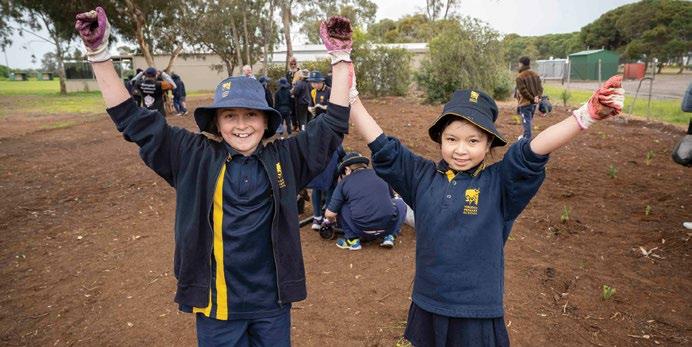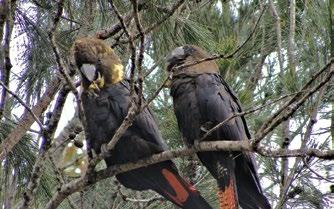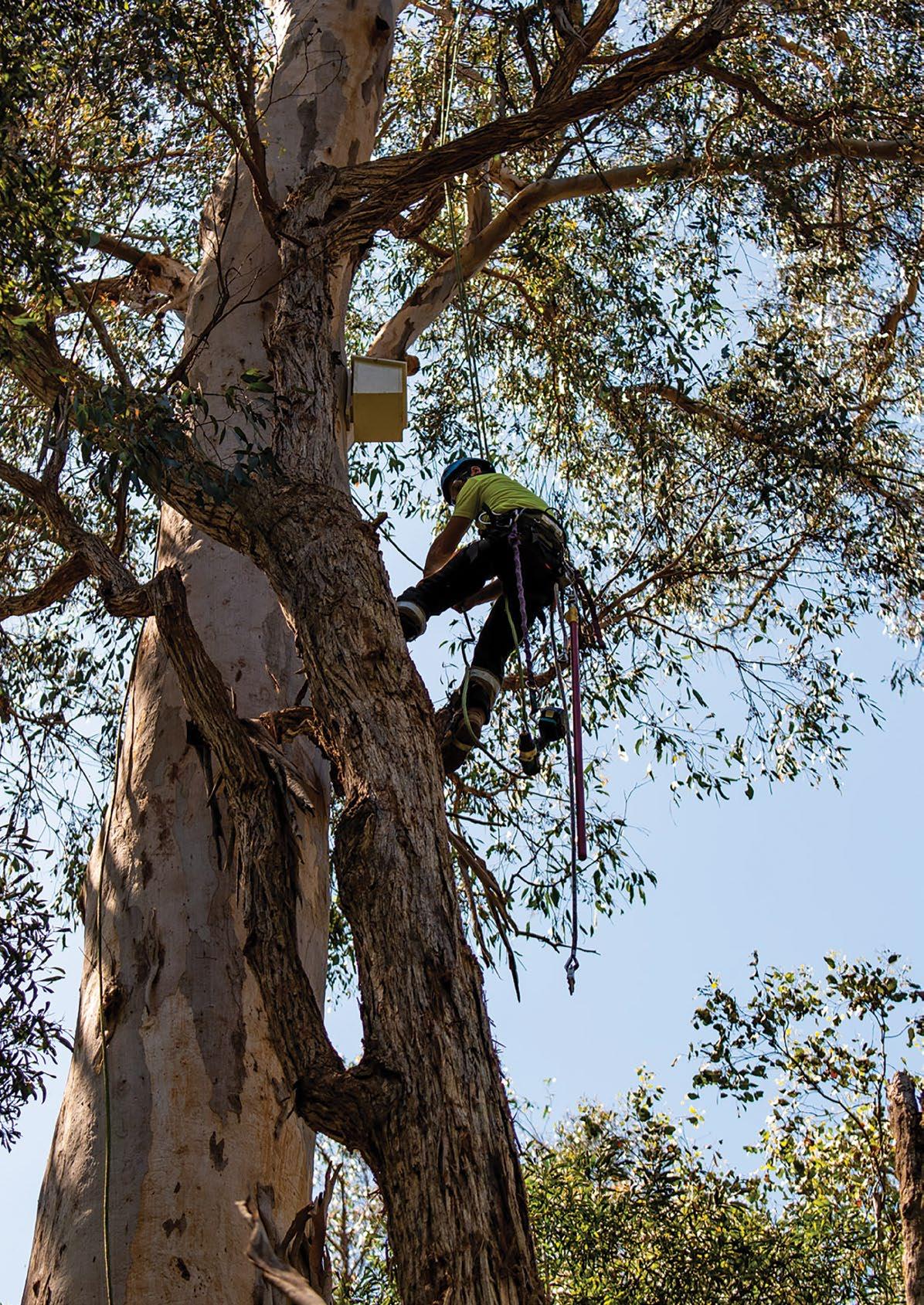
4 minute read
Hectares established
Enthusiastic students planting in their school grounds through the Cooling the Schools Adelaide pilot. Photo credit Michael Haines. Photo credit Lucy Wenger.
2022 IMPACT
Advertisement
5,077 hectares of habitat established
Habitat loss is one of the top two threatening processes leading to biodiversity decline in Australia. Access to nature and the environment is also increasingly recognised as providing important health benefits for the community. Greening Australia works with landholders to restore and repair heavily cleared landscapes and conserve biodiversity, and welcomes the Australian Government’s recent announcement on establishing a National Biodiversity Market, which has the potential to bring significant investment into habitat restoration both for the benefit of landholders and nature.
Cooling the Schools
Cooling the Schools has reached fever pitch with Sydney schools finally back in routine. The program provides curriculum-relevant resources for delivery by teachers, site specific safety and planting plans for each school, followed by an inspiring incursion where students plant microforests in their own schoolyard. During 2022 we achieved the milestone of over 100 schools delivered and 6,000 students engaged in Sydney, with one 10-year-old telling us “this day was better than my birthday!” The program sits within the NSW Government’s Priority of one million trees by the end of 2022, and also involves local communities through plantings in public green spaces across Greater Sydney. This year we were also proud to expand Cooling the Schools to Adelaide, with a pilot funded by Green Adelaide successfully delivered to eight schools in the City of Playford.
Restoring the Field River Valley
The Field River Valley Restoration project in SA has brought together stakeholders including Greening Australia, Nature’s Own, Green Adelaide, RAW Group, and the City of Marion with an aim to engage communities in restoring and reconnecting this important wildlife corridor on Kaurna Country, that links the hills to the coast. Traditional Owners were involved in completing cultural surveys to support the cultural significance and storytelling of the area, then local community and schools helped establish 6,000 habitat plants to support local wildlife. Information boards installed across the site are helping connect local visitors to the environmental and cultural significance of the site.
Giving back to the Glossy Black
Recently, as result of habitat loss through the 2019-20 bushfires, the Glossy BlackCockatoo was listed as vulnerable on the federal threatened species list. Over the past four years we have been working hard to re-establish broad areas of Allocasuarina, the primary food source for the Glossy Black-Cockatoo, across private properties in south-eastern NSW. With support from the NSW Government and the Purryburry Trust, we have now planted over 23,000 trees for this precious species, and the trees are thriving with all the recent rain!

Photo credit Lucy Wenger.
10 years of restoring Tasmania’s Midlands
Over 10 years of research across Tasmania’s only biodiversity hotspot (one of 12 nationally) culminated in a special edition of the journal Ecological Management & Restoration. Greening Australia and key partners such as the University of Tasmania, Ian Potter Foundation, JM Roberts Charitable Trust, the Tasmanian Aboriginal community, government and numerous landholders worked together to understand the complexity involved in restoring Country in Tasmania's Midlands. The work demonstrated how a multidisciplinary approach is needed to guide restoration techniques to help landscapes heal and enable reconnection of remnant vegetation.
Homes for the Greater Glider
The Greater Glider (Australia’s largest gliding mammal) has significantly declined in population due to fire and habitat fragmentation and loss. It is sadly now listed as endangered. This year, Greening Australia worked in two locations in Victoria, through partnerships with WWFAustralia and Landcare Victoria, to install over 300 Greater Glider nest boxes (plus an additional 100 Sugar Glider boxes) to help address the lack of hollows available. This work is part of a broader program restoring habitat and connections for Greater Gliders in the Gippsland region. The boxes have been installed in regions affected by fire and excitingly, Gliders have already moved in and started using them!

Due to how they travel, the nestboxes for Greater Gliders need to be installed way up in the treetops.
Photo credit Annette Ruzicka.







